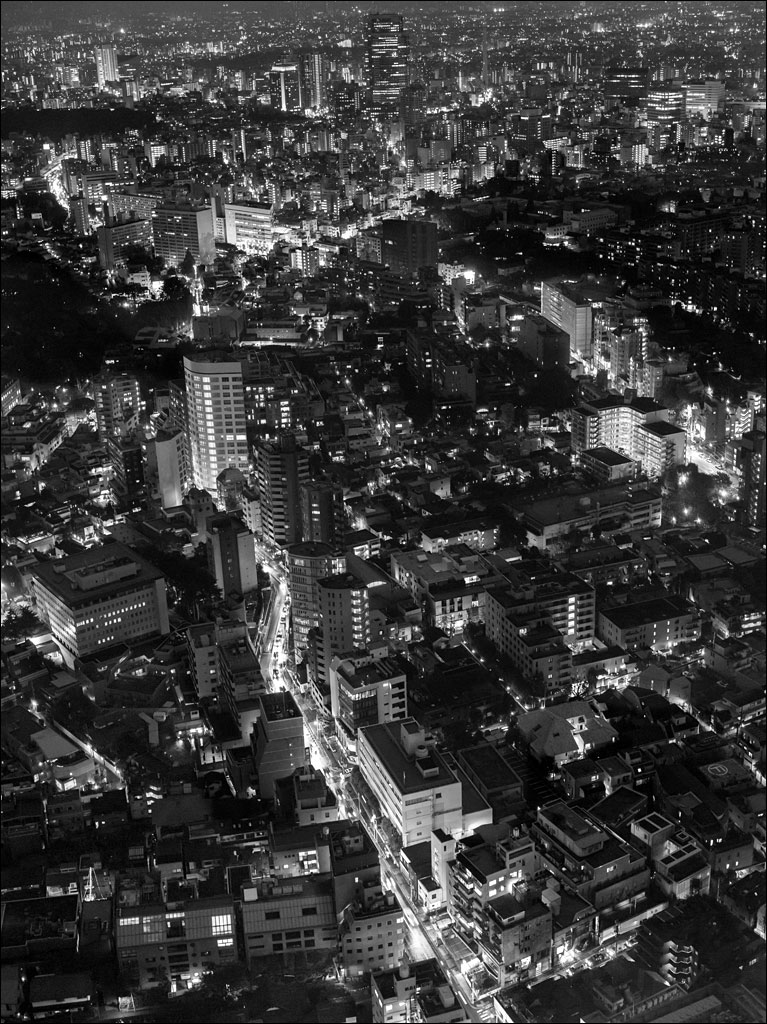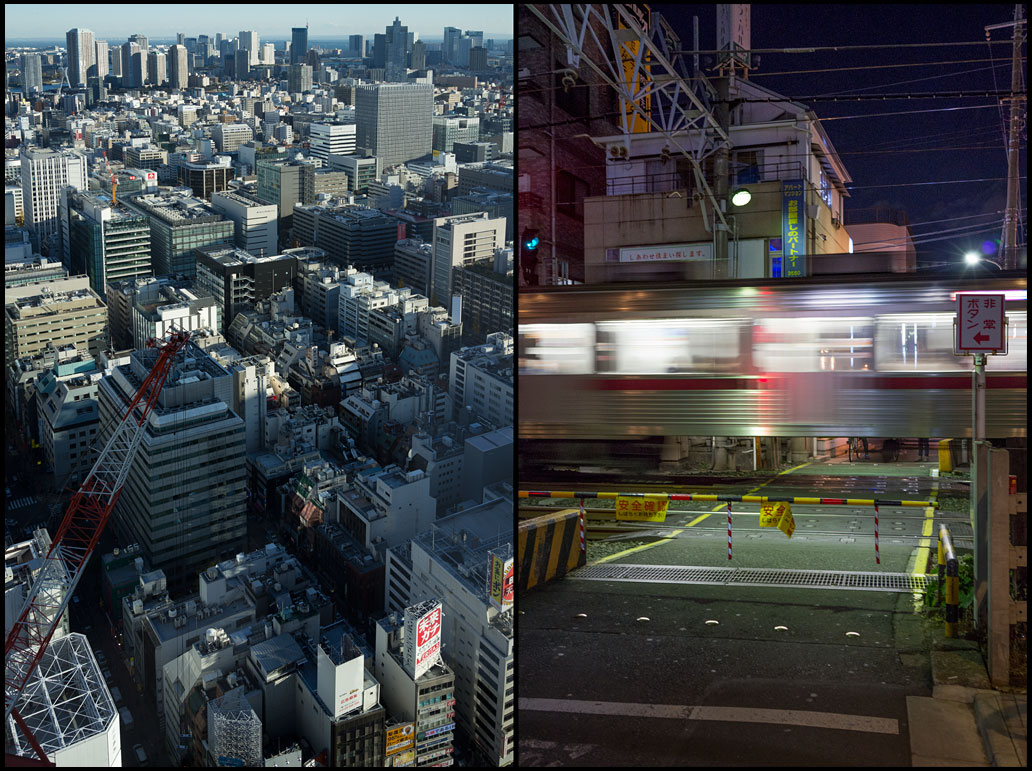Category Archives: Tokyo
Population Density
The End of an Era, Part 4
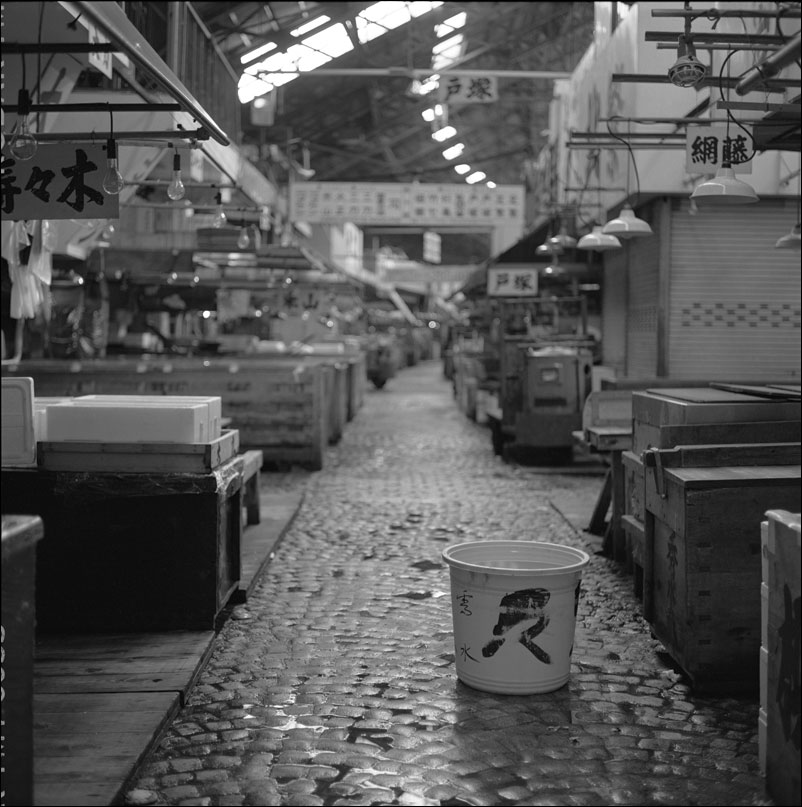 This is the last day of operation for the Tsukiji Fish Market. This image is from the early afternoon when the inner market was closed. The market had been in business in this location since 1935. The images on our site are from the early 1990s when access to the inner market was less restrictive. The increasing influx of tourists required the market to limit access. The restaurant in the outer market will remain in this location. This is from Tsukiji: Tokyo Fish Market Suite. Click on the image for a larger view.
This is the last day of operation for the Tsukiji Fish Market. This image is from the early afternoon when the inner market was closed. The market had been in business in this location since 1935. The images on our site are from the early 1990s when access to the inner market was less restrictive. The increasing influx of tourists required the market to limit access. The restaurant in the outer market will remain in this location. This is from Tsukiji: Tokyo Fish Market Suite. Click on the image for a larger view.
The End of an Era, Part 3
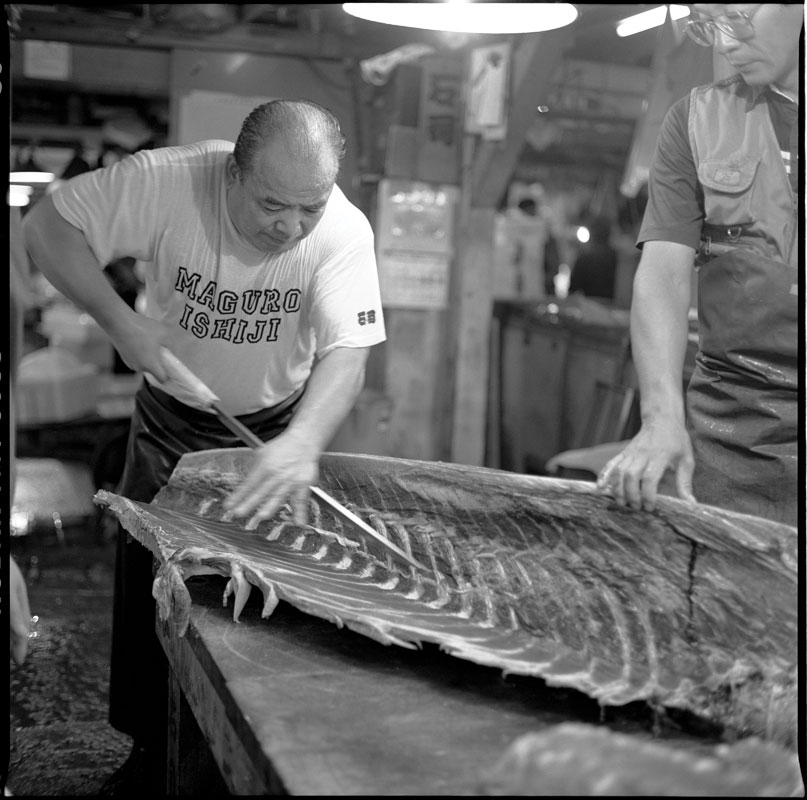 Wholesaler preparing a tuna from the auction with a knife especially designed for the fish. Maguro is the Japanese for tuna. This is the last week of operation for the fish market at the Tsukiji location. The image is from Tsukiji: Tokyo Fish Market Suite. Click on the image for a large view.
Wholesaler preparing a tuna from the auction with a knife especially designed for the fish. Maguro is the Japanese for tuna. This is the last week of operation for the fish market at the Tsukiji location. The image is from Tsukiji: Tokyo Fish Market Suite. Click on the image for a large view.
The End of an Era, Part 2
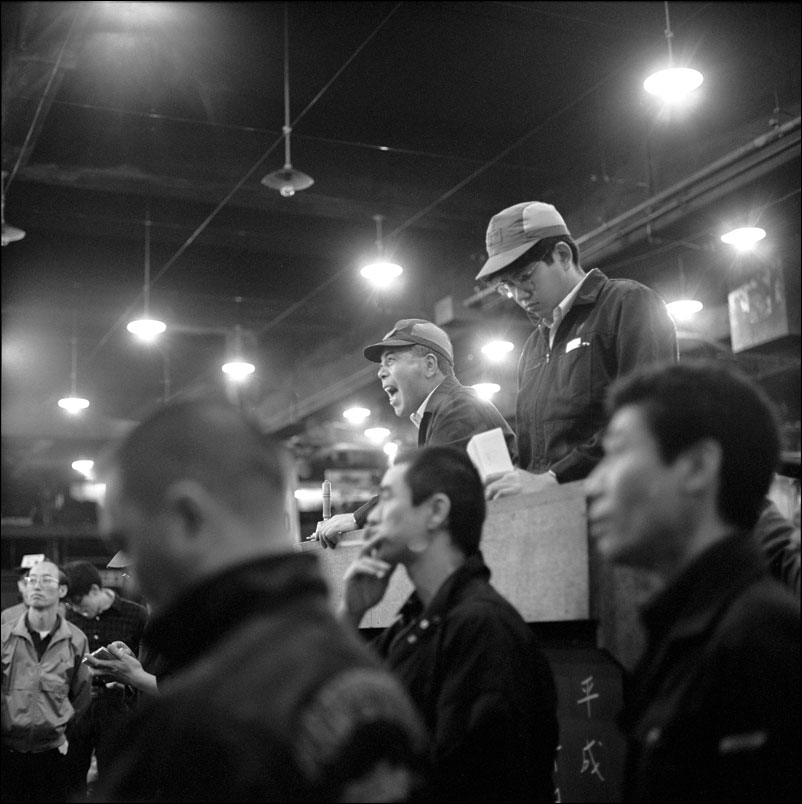 Tuna auctioneer at Tsukiji Fish Market in Tokyo. This is the last week of operation before the market moves to Toyosu, a few kilometers from this site. The image is from Tsukiji: Tokyo Fish Market Suite. Click on the image for a larger view.
Tuna auctioneer at Tsukiji Fish Market in Tokyo. This is the last week of operation before the market moves to Toyosu, a few kilometers from this site. The image is from Tsukiji: Tokyo Fish Market Suite. Click on the image for a larger view.
The End of an Era, Part 1
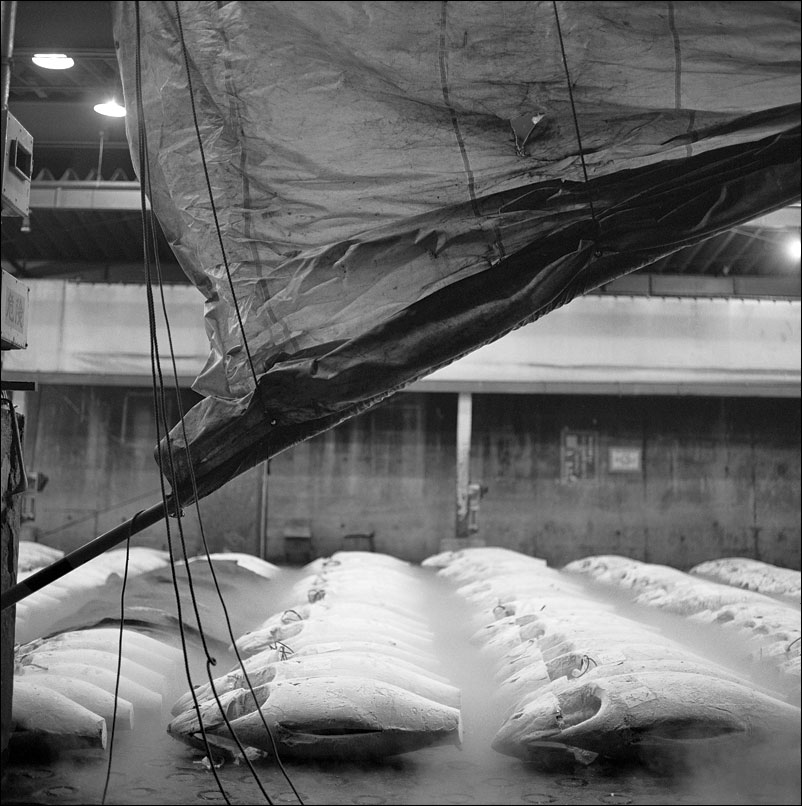 From September 30th, visitors will not be able to view the fish market. October 6th, 2018 marks the last business day for the Tokyo Central Wholesale Market in Tsukiji: the market will move a few kilometers away to Toyosu. I was fortunate to be able to visit the market at its peak in the early 1990s. I produced a small book on this amazing place: Tsukiji: Tokyo Fish Market Suite. While the market is clearly in many people’s hearts, the aging 1935 structure was in need of updating. I am grateful to have experienced this place. Still, access to the fish market and its famous tuna auctions will not be the same. Click on the image for a larger view.
From September 30th, visitors will not be able to view the fish market. October 6th, 2018 marks the last business day for the Tokyo Central Wholesale Market in Tsukiji: the market will move a few kilometers away to Toyosu. I was fortunate to be able to visit the market at its peak in the early 1990s. I produced a small book on this amazing place: Tsukiji: Tokyo Fish Market Suite. While the market is clearly in many people’s hearts, the aging 1935 structure was in need of updating. I am grateful to have experienced this place. Still, access to the fish market and its famous tuna auctions will not be the same. Click on the image for a larger view.
Fishing
Koenji—On the Streets of Tokyo
 In the 1990s, shopping streets were a common feature of Tokyo neighborhoods and a central locus for communities. Shops were often multigenerational family businesses. Today, large department stores and online retailers are making the economics of running local stores difficult, if not impossible. This street in Koenji from the 90s is typical of many of these thoroughfares. Click on the image for a larger view.
In the 1990s, shopping streets were a common feature of Tokyo neighborhoods and a central locus for communities. Shops were often multigenerational family businesses. Today, large department stores and online retailers are making the economics of running local stores difficult, if not impossible. This street in Koenji from the 90s is typical of many of these thoroughfares. Click on the image for a larger view.
Shinobazu no Ike
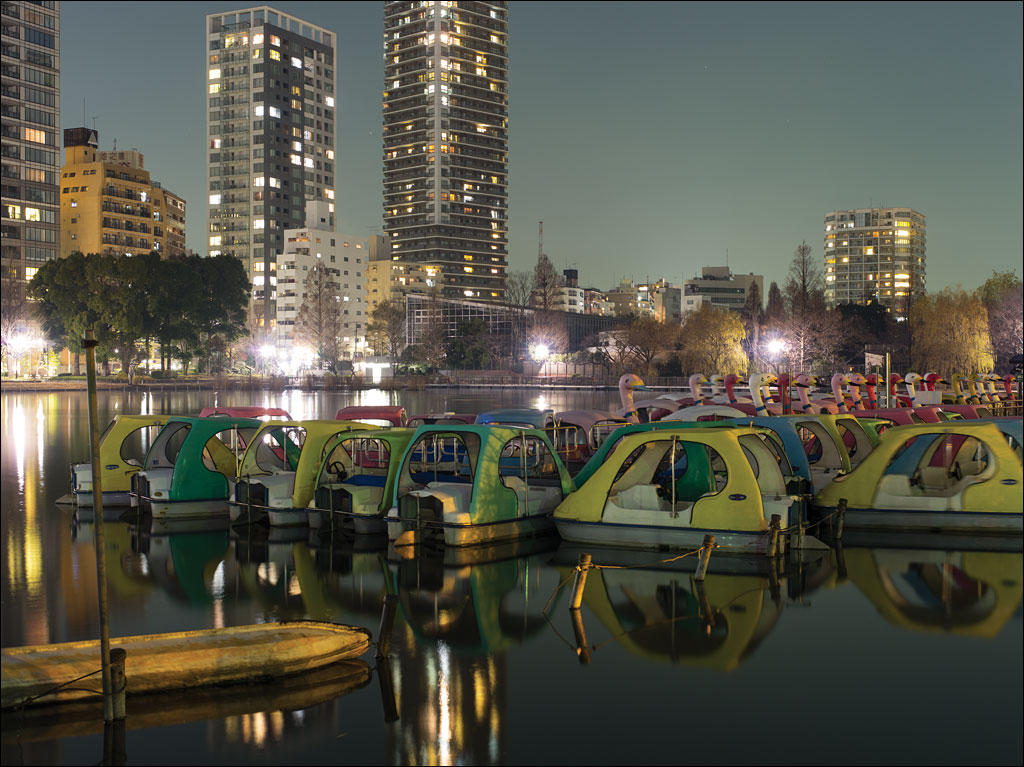 Shinobazu no Ike, or Shinobazu Pond, is located in Ueno Park, Tokyo. This is all that remains of the marsh that has been filled since Edo was established in the seventeenth century. The eastern part of Tokyo was reclaimed from this marsh and is protected by a series of flood walls. During World War II, the pond was used for growing rice. After the war, discussions on whether to convert the area to baseball fields were held. Boating on this pond goes back to 1931. This image is from our book Earth, Water, Fire, Wind, Emptiness: Tokyo Landscapes. Click on the image for a larger view.
Shinobazu no Ike, or Shinobazu Pond, is located in Ueno Park, Tokyo. This is all that remains of the marsh that has been filled since Edo was established in the seventeenth century. The eastern part of Tokyo was reclaimed from this marsh and is protected by a series of flood walls. During World War II, the pond was used for growing rice. After the war, discussions on whether to convert the area to baseball fields were held. Boating on this pond goes back to 1931. This image is from our book Earth, Water, Fire, Wind, Emptiness: Tokyo Landscapes. Click on the image for a larger view.
Number 3 Daiba
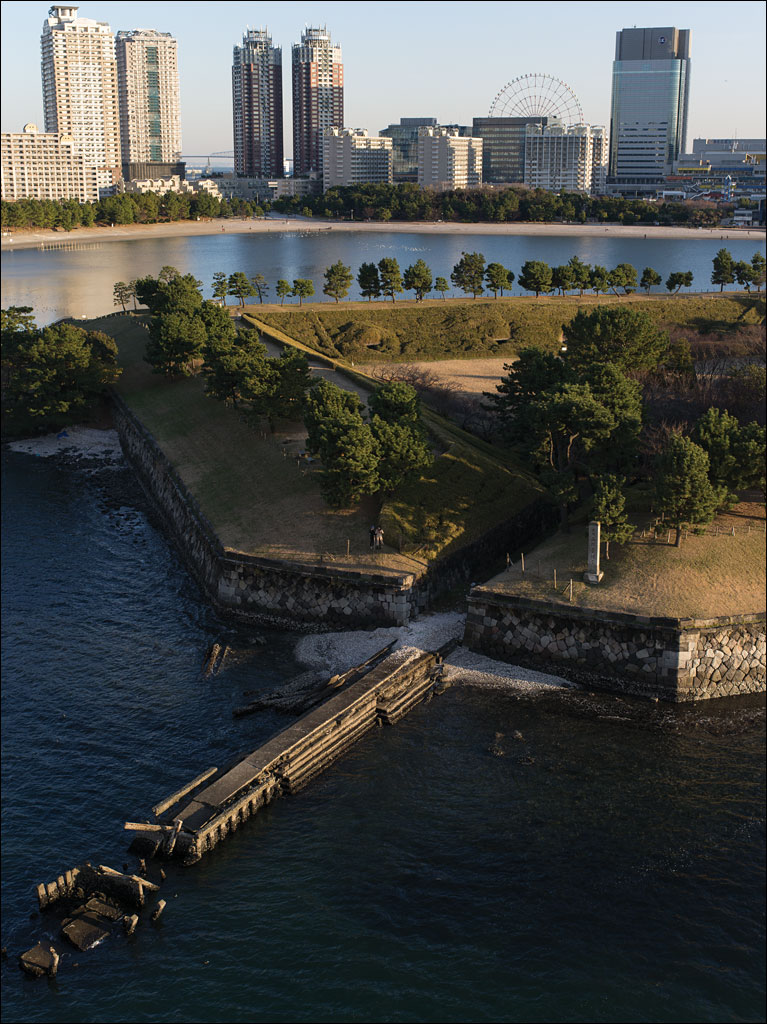 What looks like a peaceful Japanese garden is Number 3 Daiba, a fortification built in 1853 as a response to attempts by US Commodore Perry to open Japan. Beyond that is the artificial island of Odaiba, which was constructed after World War II and one of the planned sites for the 2020 Tokyo Olympic Games. Between the two high-rise apartment building on the left is Tokyo Gate Bridge, the furthest extent of the city into the bay. Number 3 Daiba was originally built several kilometers off the coast of the city in open water. This image comes from our book Earth, Water, Fire, Wind, Emptiness: Tokyo Landscapes. Click on the image for a larger view.
What looks like a peaceful Japanese garden is Number 3 Daiba, a fortification built in 1853 as a response to attempts by US Commodore Perry to open Japan. Beyond that is the artificial island of Odaiba, which was constructed after World War II and one of the planned sites for the 2020 Tokyo Olympic Games. Between the two high-rise apartment building on the left is Tokyo Gate Bridge, the furthest extent of the city into the bay. Number 3 Daiba was originally built several kilometers off the coast of the city in open water. This image comes from our book Earth, Water, Fire, Wind, Emptiness: Tokyo Landscapes. Click on the image for a larger view.

